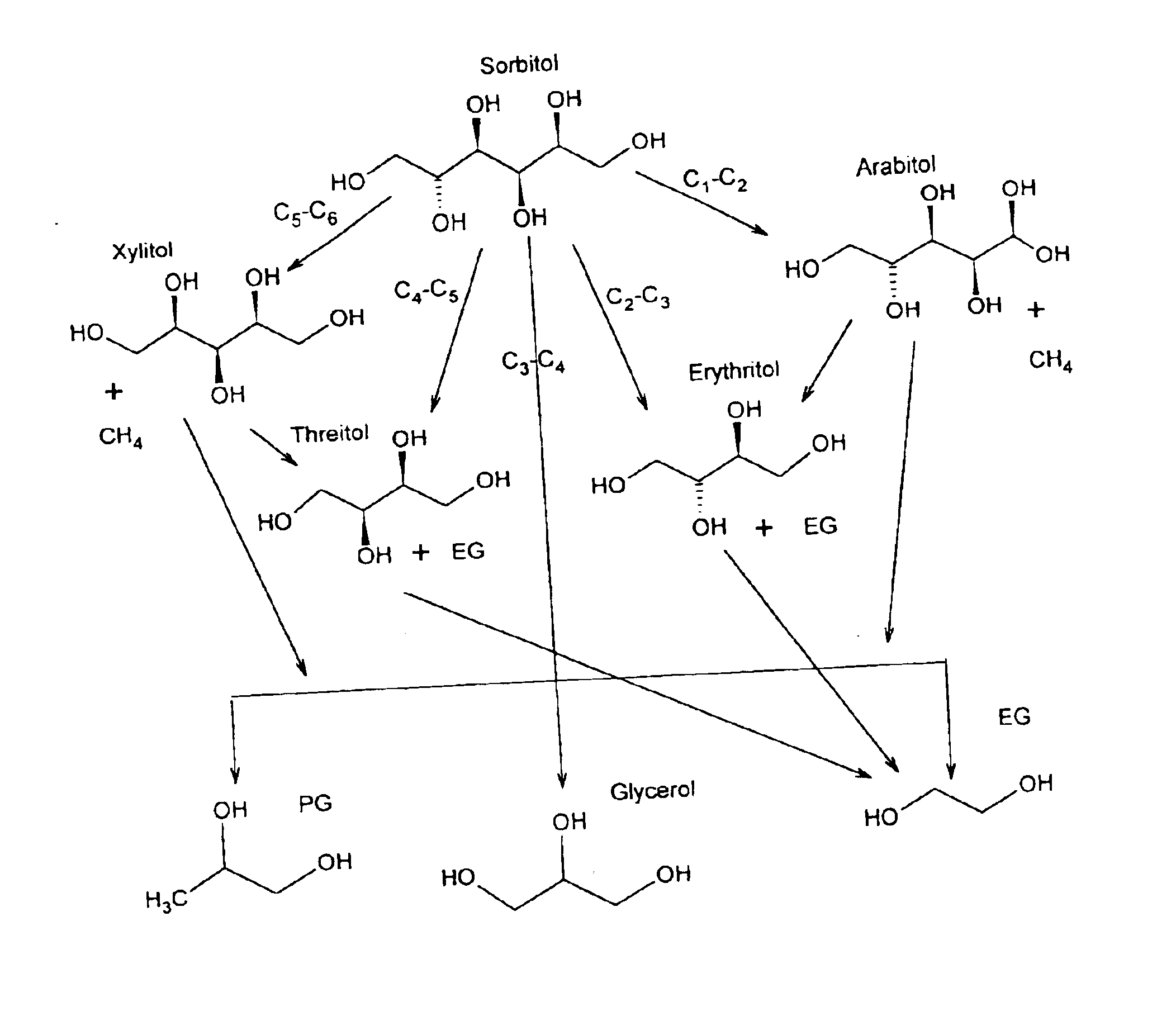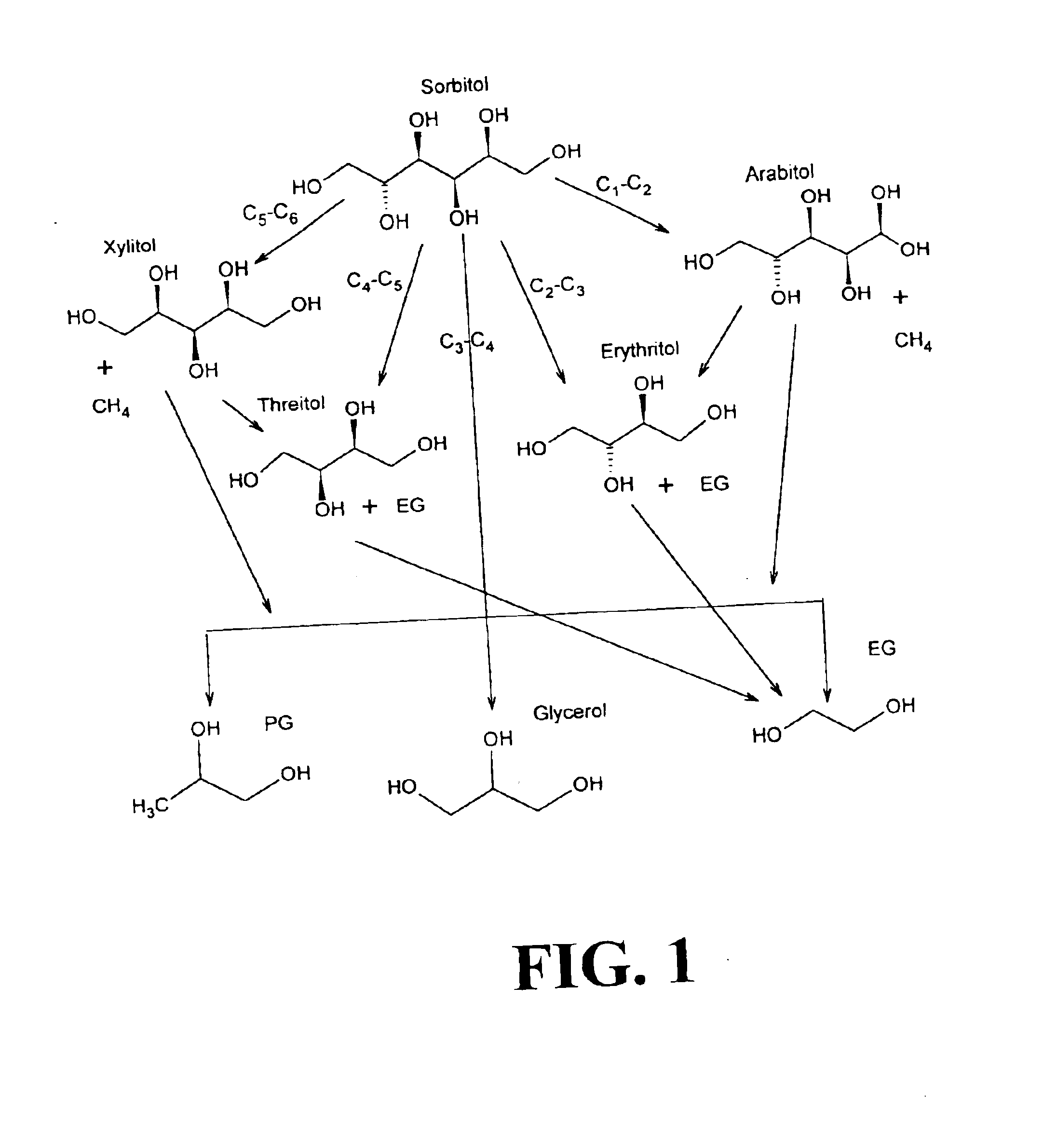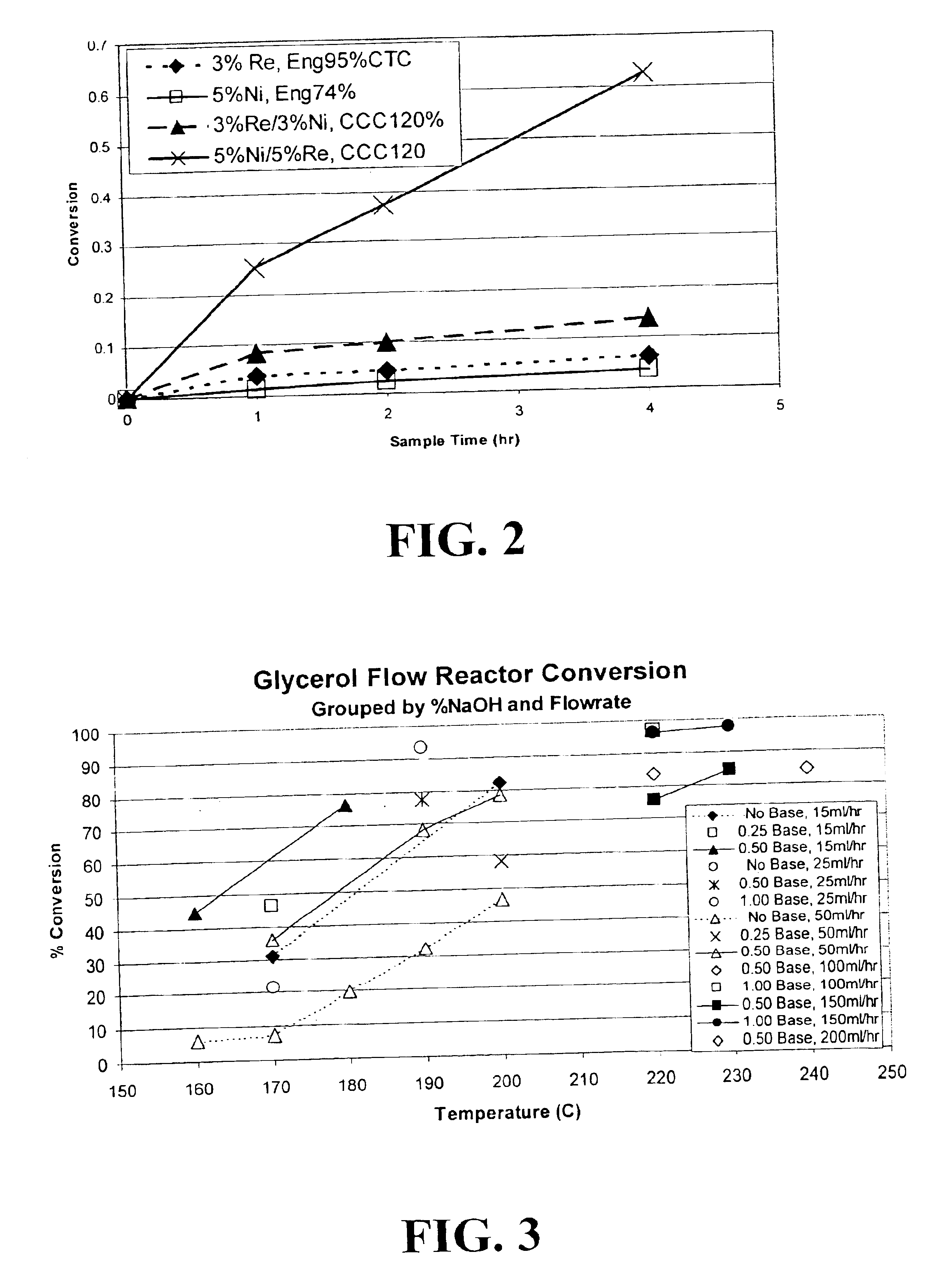Hydrogenolysis of 6-carbon sugars and other organic compounds
a technology of organic compounds and hydrolysis, applied in the field of hydrolysis of aqueous organic compounds, can solve the problems of severe environmental consequences of extraction, transportation, and refining of petroleum, and achieve the effect of high pg selectivity
- Summary
- Abstract
- Description
- Claims
- Application Information
AI Technical Summary
Benefits of technology
Problems solved by technology
Method used
Image
Examples
examples
Preparation Of Nickel / Rhenium on Carbon Catalyst
The carbon used for this preparation was a Calgon 120% CTC coconut carbon. Incipient wetness for the carbon was measured at 0.85 cc of liquid per gram of carbon. Moisture content was determined to be 1.3%.
The impregnation volume was calculated using the incipient wetness of 0.85 cc / g. The total weight of catalytic metal required is calculated by the following formula:
Wmtl=WC*((1 / PC)−1)
Where WC is the weight of carbon being impregnated and PC is the weight percent of carbon in the reduced catalyst mix, calculated by taking 1 minus the weight percent of catalytic metal desired. In the case of 2.5 wt % nickel / 2.5 wt % rhenium catalyst the PC value is 0.95.
The weight of each of the catalytic metals (WNi and WRe) is determined by multiplying the total weight of catalytic metal by the fraction that each particular metal represents in the total catalytic metal weight. Thus:
WNi=Wmtl*(PNi / PNi+PRe)
WRe=Wmtl*(PRe / PNi+PRe)
Where PNi and PRe are the ...
PUM
| Property | Measurement | Unit |
|---|---|---|
| temperature | aaaaa | aaaaa |
| temperature | aaaaa | aaaaa |
| weight % | aaaaa | aaaaa |
Abstract
Description
Claims
Application Information
 Login to View More
Login to View More - R&D
- Intellectual Property
- Life Sciences
- Materials
- Tech Scout
- Unparalleled Data Quality
- Higher Quality Content
- 60% Fewer Hallucinations
Browse by: Latest US Patents, China's latest patents, Technical Efficacy Thesaurus, Application Domain, Technology Topic, Popular Technical Reports.
© 2025 PatSnap. All rights reserved.Legal|Privacy policy|Modern Slavery Act Transparency Statement|Sitemap|About US| Contact US: help@patsnap.com



